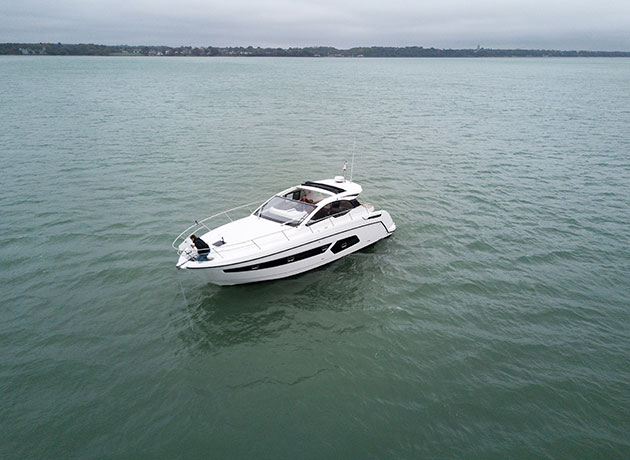In this episode, we guide you through how best to trim your boat if you are having to helm downwind
How to: Helm downwind
The design of the latest generation of hulls, along with the power-to-weight ratio of modern diesels, means most planing motor boats are astonishingly capable at travelling downwind
in quite rough conditions.
The large flared bow means you can drive them on to the rear face of each wave and hold it there until the weight pushes through and you can move on to the back of the next one.
Be aware that if the wind has been blowing in the same direction for more than a few hours, the waves generated can be moving at considerable speed. Travelling in the same direction as the wind, it’s also very easy to miss a gradual increase in wind speed and you can suddenly find that it’s got very rough! Article continues below…

VIDEO: How to – Head to windward
In our latest boat handling video, Jon Mendez shows how best to trim the boat when you head to windward

VIDEO: How to – Pick up a mooring buoy
In this episode we guide you through the best techniques for picking up a mooring buoy
If this is the case, you need to consider how your vessel will handle the conditions if it becomes too rough to continue at planing speeds. If you have to slow to displacement speed, or if a problem means you need to turn back, reaching the nearest port might require a long upwind slog.
Craft which have a displacement or semi-displacement hull form need to be particularly cautious, especially if they have a wide, square stern, as this makes them more susceptible to being picked up by a large following wave.
If the stern is picked up and the boat starts to surf, this may cause the bow to be driven into the trough of the wave ahead, slewing the boat round.
To counter this, displacement and semi-displacement craft generally have larger rudders so the skipper needs to be ready to change the boat’s heading as soon as they feel the stern being lifted.
Driving a planing boat downwind is relatively simple and usually involves maintaining a straight course while applying enough power to get the boat riding up and over the waves.
Even when tempted by flatter seas, don’t travel at more than 2/3 throttle so that you have enough power in reserve to outrun any larger waves that do catch you.
Read the full guide in the December 2017 issue of MBY.






















